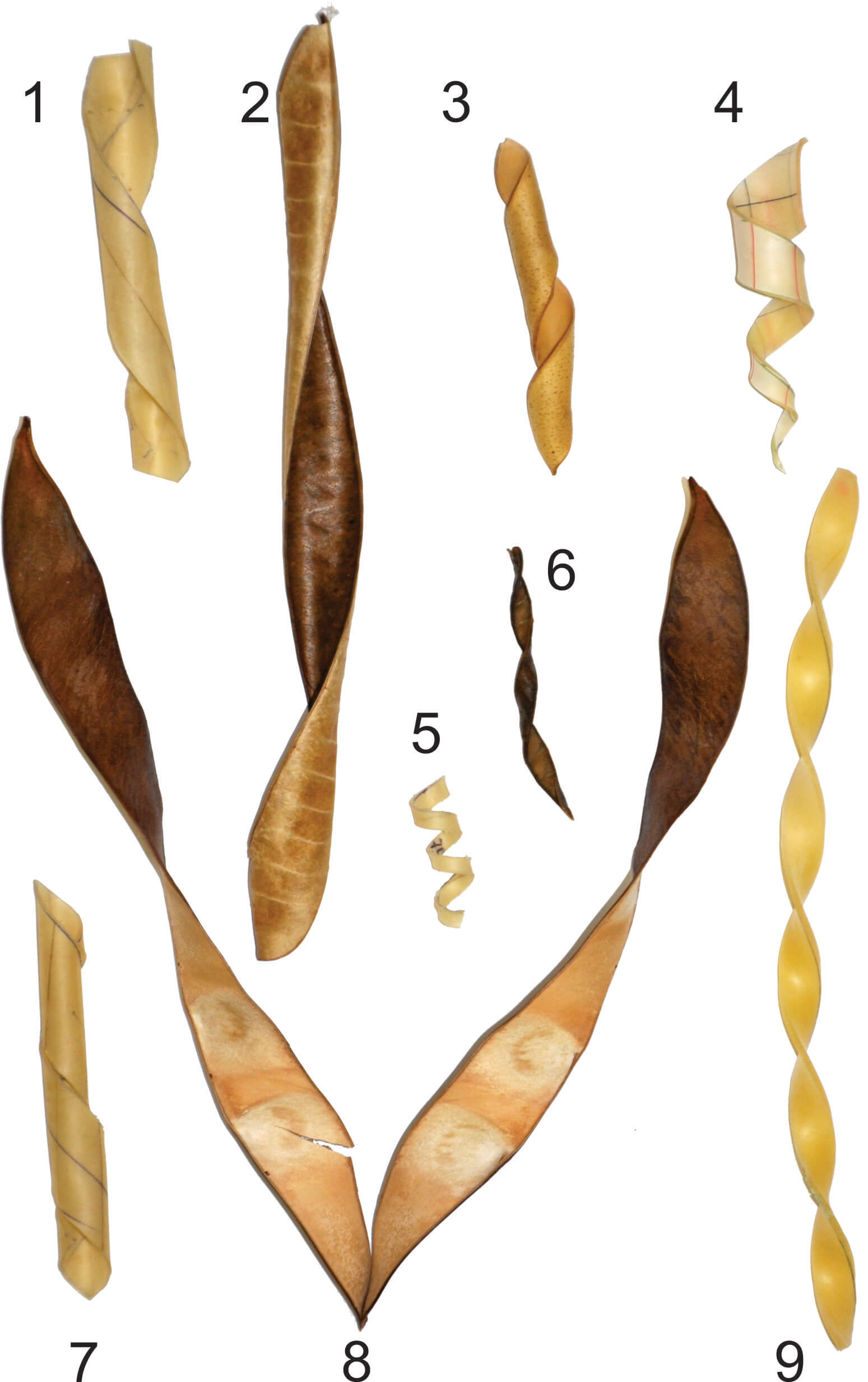Helical structures, like the seed pods, are common in nature and are also found in human service. The DNA molecule is perhaps the best known, but there are other molecules, such as cholesterol, which are organized into different helical structures that affect their function in our body

What is the mechanism responsible for curling both sides of a seed pod when it is opened? This is the question that PhD students Shaf Amron and Efi Efrati asked themselves. The two, under the guidance of Prof. Raz Kuperman from the Department of Mathematics and Prof. Eran Sharon from the Department of Physics at the Hebrew University, were surprised to discover that a decrease in humidity in the air activates two fibrous layers of which the backpacks are made and causes their sides to curl in opposite directions.
According to Prof. Sharon, "it is an ingenious way in its simplicity to build the pod so that it opens at the right time and scatters the seeds." This way the survival of the plant is guaranteed. The groundbreaking research was published this weekend in the prestigious scientific journal "Science".
Helical structures, like the seed pods, are common in nature and are also found in human service. The DNA molecule is perhaps the best known, but there are other molecules, such as cholesterol, which are organized in different helical structures that affect their function in our body. On larger scales we find many helical structures in the animal and plant world, such as tendrils, climbing plants and even the hair on our bodies. Springs and drills are familiar examples of helical engineering structures, but microscopic helical structures of liquid crystals also affect our daily lives, being responsible for the significant improvement in the quality of LCD screens in recent years.
The researchers tried to understand the principles that cause spontaneous curling when the seed pod is opened, and were surprised to discover a geometric-mechanical mechanism that was previously unknown among the engineering community. The discovery could have significant implications for science and technology. First, it opens a way for a quantitative understanding of shape changes that appear during embryonic development. Secondly, it is possible to learn principles from nature that will make it possible to build strips and soft structures from "smart material", which will curl and change shape by themselves following external activation. This way we can produce "soft machines", such as an octopus, which, despite being made of one piece, can flexibly change their shape.
Indeed, following the discovery of the mechanism, Chestnut built an imitation of a seed pod using a heat-sensitive gel. The result was a strip of "smart material" that can be operated with the help of temperature changes. When heated, the strip changes its shape from a flat state to various curled shapes such as screws, coils and tubes. Following this, Efrati developed a theoretical model based on an innovative formulation of the elastic Torah. The formulation simplifies the problem, physical in origin, to geometric terms. This abstraction made it possible to discover the relationship between seed pods and chemical molecules.
Following the simplification, it became clear to the researchers that the same mechanism that causes seed pods to open is responsible for the curling of supermolecules that are built spontaneously in various chemical and biological systems. "The measurements made in the research provide for the first time an explanation for shape changes observed in the past in molecules of this type", Prof. Sharon clarifies.

5 תגובות
Give a link to the article at least maybe we will understand something
I couldn't figure out what's new. The principle of attaching two different materials that will cause a geometrical change in accordance with the change in environmental conditions is known and has been in use for many years. It seems to me that wooden pegs for splitting rocks were among the first and "B-Metal" and the like have been the industrial standard for many years.
You didn't say anything
interesting.
Although the reason for DNA curling is the environment it's in, isn't it? A hydrophobic/hydrophilic environment affects this, not temperature.
Nice!